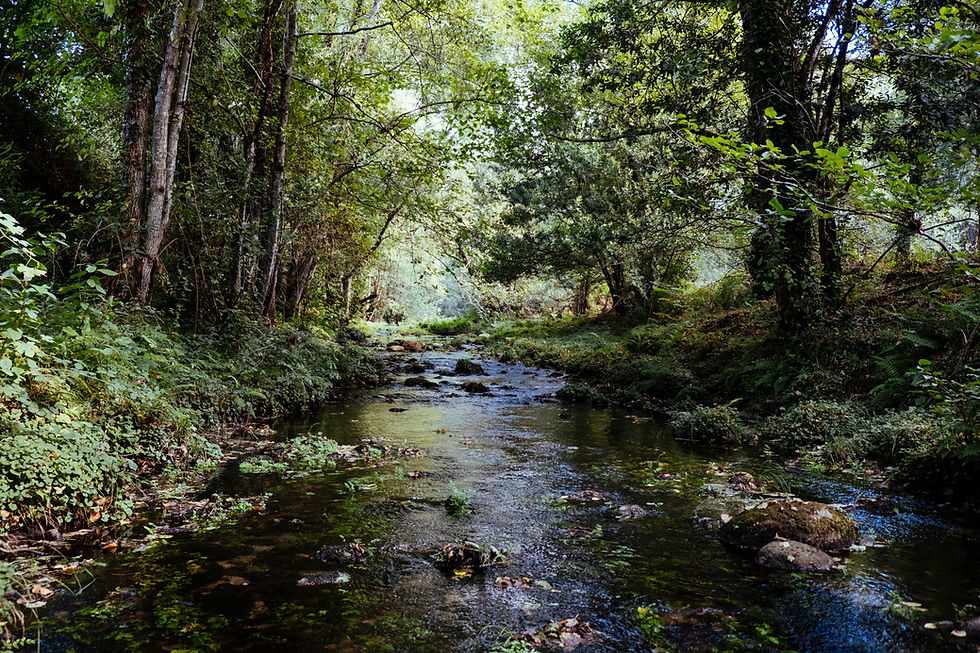Tin Mining in the Bronze Age c 3300 - 1200 BCE
- Sylvia Rose

- Jan 8, 2024
- 4 min read
In Bronze Age Europe tin is an important commodity. Bronze uses 88% copper and 12% tin. Lacking tin, or for harder bronze, metal workers sometimes use arsenic. European tin trade follows the Amber Roads of the north and forges further connecting networks.
Read: Cult of the Fire God - Bronze Age Quest Adventure
See also:
Most early sources of tin are placer deposits of iron ores. Tin is a comparatively rare earth element. In the Earth's crust is occurs at only 2 parts per million (ppm). Zinc occurs at 94 ppm, copper 63 ppm and lead 12 ppm.
Read: Cult of the Fire God - Bronze Age Quest Adventure
Although tin also occurs in small amounts in other elements such as stannite, the primary tin oxide mineral is cassiterite (SnO2). The gem is overall opaque but translucent in thin crystals. Its luster and multiple crystal facets reflect light from the surface and perhaps inner inclusions.
See also:
It creates a fascinating, darkly glowing gem. Although suited for jewelry it's the major tin ore of the ancient world. Cassiterite is still the most important tin source today.
Extraction takes knowledge and technology, much of which develops during the previous Copper Age and further experimentation. A process of smelting extracts tin from cassiterite.
See also:
Heating cassiterite at extreme temperatures with carbon and limestone creates tin metal. The first evidence of mining tin to make bronze is about 3000 BCE in the ancient near East and the Balkans.
Read: Cult of the Fire God - Bronze Age Quest Adventure
Cassiterite commonly occurs in placer deposits. These form when a river or stream wears down surface material and picks up elements such as metals or minerals in or under the eroded particles.
See also:
The river carries the elements downstream. When the water slows, the elements fall to the riverbed, often near shore near a bend. Mineral particles must have a specific gravity above 2.58 to fall. There they accumulate to form a placer deposit. Some deposits can be very generous.
Placer deposits are often found by looking for black sand, a conspicuous shiny black mixture of iron oxides. Desirable mineral components found with black sands can include monazite, rutile, zircon, chromite, wolframite, and cassiterite. Alluvial gold deposits are created the same way.
See also:
Ancient mining focuses on placer deposits. They're easy to access and can provide a rich bounty. The gold and diamond rushes of the 19th century are triggered by findings in placer deposits.
The earliest site of tin mining in Europe is in the Ore Mountains in Germany. At the border of Germany and Czechia, the site dates to c. 2500 BC. From here, tin is traded north to the Baltic Sea and south to the Mediterranean following the Amber Road trading route.
See also:
By 2000 BCE, tin mining has taken hold in Brittany, France; Devon and Cornwall in today's UK; and the Iberian Peninsula. These deposits come under further exploitation by the Romans between the third century BCE and the first century AD.
The early Phoenicians of today's Lebanon, a merchant marine force with cutting edge boat-building technology, are secretive about the location of their tin. Later Greek writers name English sources.
See also:
In Classical times beginning c. 6th century BCE, a vast tin trade network forms among Mediterranean cultures. By Medieval times, c. 500 - 1400 AD, deposits of Iberia and Germany decline in significance. Devon and Cornwall dominate the European tin market.
In the Far East, a tin belt from Yunnan in China to the Malay Peninsula is first recorded c. 2500 BC. Deposits in Yunnan aren't mined until around 700 BCE, but soon become the main source of tin in China.
See also:
Tin mining develops at various rates. In Africa, the Bantu culture extracts, smelts and exports tin between the 11th and 15th centuries AD. In the Americas, tin is first evident by 1000 AD. Tin deposits in Australia are exploited by Europeans in the 18th century.
Besides use in bronze, tin is a beauty accessory. Polished tin and copper discs become early mirrors. Tin is made into utensils, pots and pans, tin tiles, toys and building components.
See also:
Decorative tin foil similar to silver or gold foil is used as embellishment in the ancient world. Today tin oxide (cassiterite), along with mica, is still one of the natural elements used to give makeup its shimmer.
See also:











